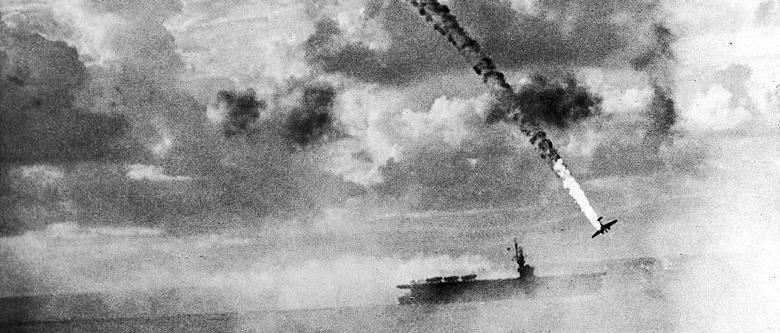Kamikaze: Divine Wind
Posted on 19th July 2021
By the late summer of 1944, the War in the Pacific was heading towards its bloody but inevitable conclusion for in truth, despite their stunning early successes Japan had been a beaten country almost since the opening day of the conflict when they failed to destroy the American Aircraft Carriers at Pearl Harbor. An omission that was to have disastrous consequences following the loss of their own at the Battle of Midway seven months later.
But recognising defeat and accepting it as a fait accompli are very different things and already fighting with a tenacity and self-sacrifice rarely seen in warfare its prospect only served to stiffen resistance even further.
On 5 June, requiring a forward base for their B-29 Super-fortresses to commence daylight bombing raids on Japanese cities, American forces landed on Saipan, part of the Mariana Island chain wrong-footing the Japanese who expecting an attack farther south and were ill-prepared.
Whilst the Japanese Army fought hard for every yard of the Island Admiral Soemu Toyoda, in command of the Navy saw it as an opportunity to engage the American Fleet in the decisive battle that would result in a second Pearl Harbor, a strategy they had long pursued.
It was to be an error of judgement with consequences that went far beyond the loss of Saipan itself.
On 19 June, he ordered his Carrier based planes to attack in the first of a series of raids on the American invasion fleet. Intercepted by Hellcat fighters of Task Force 58 assigned to the protection of the invasion force the Japanese in inferior planes and with many of their pilots untested and inexperienced were decimated. During a one-sided encounter that was to continue for most of the day they lost 315 planes shot down at the cost of just 28 American in what became known as the ‘Great Marianas Turkey Shoot.’ The way was now clear for the Americans to strike the Japanese Carrier Force.
Late on the afternoon of 20 June, American spotter planes located the Japanese Fleet. They had done so just in time for it was it was fast steaming out of range but despite darkness already descending and aware that many of their planes would be forced to ditch in the sea on their return journey the order was given to attack.
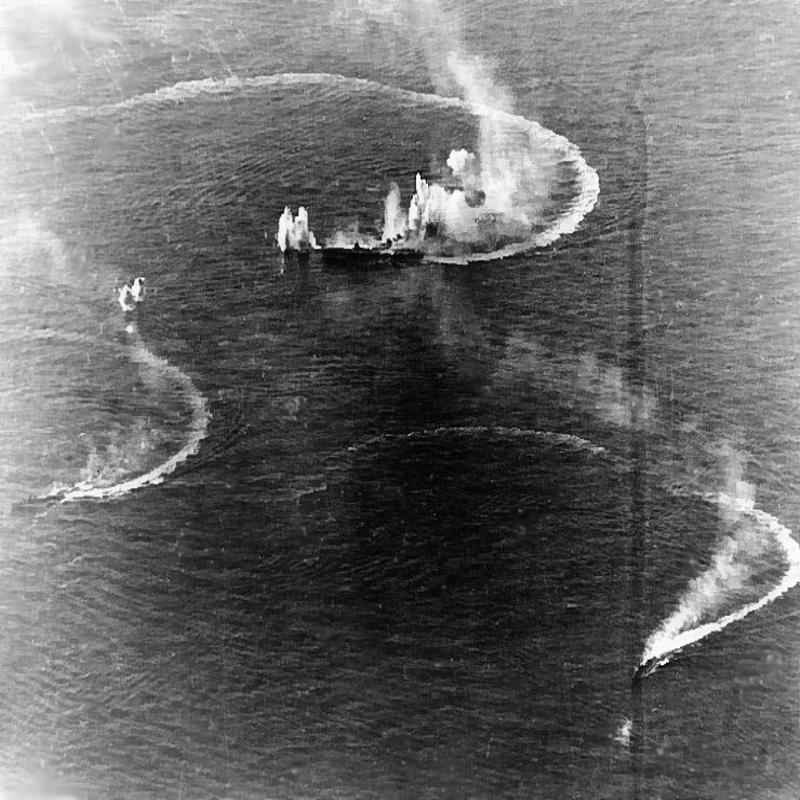
The subsequent Battle of the Philippine Sea was to prove a disaster for the Japanese Navy as three Aircraft Carriers were sunk with the loss of a further 350 planes and even more significantly their remaining experienced pilots. It was the destruction of Japanese Navy’s Air Arm as an effective fighting force. Another way would have to be found to halt the American advance.
On 15 July 1944, Captain Motaharu Okamura of the 341st Air Group based in Tokyo wrote in a memo that was widely circulated: “I firmly believe that the only way to win the war is to crash-dive attack with our planes, there is no other way. I would like to command such an operation. Provide me with 300 planes and I will turn the tide of the war. There will be no lack of volunteers to save our country.”
Captain Okamura’s idea was taken up by Admiral Takijiro Onishi who approached Japanese High Command requesting permission to form suicide squads. His request was granted but only on a voluntary basis, there was to be no coercion. It wasn't necessary in any case, as Okamura was proved right and there was to be no lack of volunteers at least during the early months of recruitment.
Named Kamikaze, after the typhoons that had dispersed and destroyed the invasion fleets of the Mongol Emperor Kublai Khan in 1274 and 1281, they were told that not only would they do likewise to the advancing Americans but that but that upon death their spirits would inhabit the Yasukuni Shrine where the Emperor himself would pray for their gentle repose.
Such was the prospect of glory they were soon seen as romantic figures - the inheritors of the Samurai tradition.

The average age of a Kamikaze was 20 years, and some were as young as 17, their youth in large part the result of the requirement for them to be unmarried and have no children.
And there was to be no hesitation, no sense of doubt, they were to be happy warriors eager to do their duty filmed in newsreels for public consumption drinking sake, singing patriotic songs and being seen off on their final journey by beautiful women waving white handkerchiefs weeping with pride and joy.
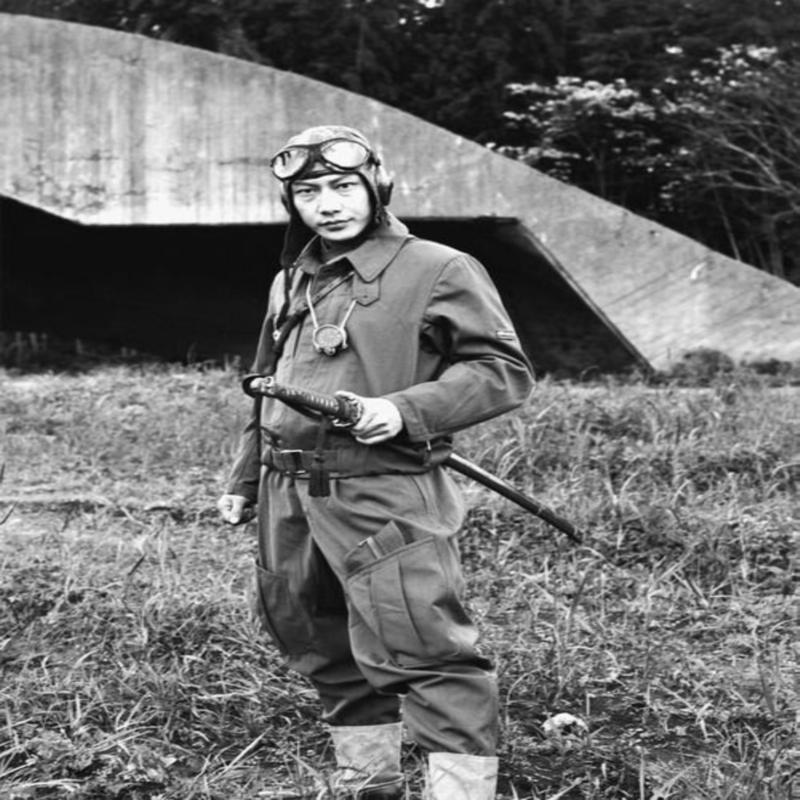
Some would be pictured with their Samurai sword before taking off - it was actually too large for the cockpit and would be returned to the Ground Crew as the camera panned away.
Emperor worship, the military code of Bushido and the State religion Shinto had created in Japan a deep strain of fanaticism that in turn created its own problems.
One Flying Officer with a wife and two daughters was so distraught at having his requests to become a Kamikaze repeatedly declined that he wrote home of his shame. In response, his wife drowned herself and their children. He was to get his wish and was killed soon after.
But as these early enthusiasts for martyrdom were killed off maintaining the production line of willing volunteers became increasingly difficult and great social pressure was brought to bear with words such as cowardice, shame and dishonour becoming almost as feared as American bombs and bullets.
Many pilots expressed an unwillingness to sacrifice their lives in letters written home though they often did so in terms of regret rather than reluctance and so those it was felt had volunteered merely to avoid bringing dishonour upon their family and lacked the required spirit of patriotism would have it beaten into them. Others would simply be volunteered by their Commanding Officers.
Even so, as the conflict wore on the number of Kamikaze who crash-landed soon after take-off, failed to find their target, returned to base with mechanical problems or simply disappeared during flight were to increase significantly.
On 21 October 1944, as American forces began their landing on Leyte in the Philippines a Japanese Bomber deliberately crashed into the Bridge of the HMAS Australia killing its Captain and 29 others. It was thought at the time the act of lone madman but was instead a sign of things to come.
The first Kamikaze ‘Special Attack Force’ was to be led by Lieutenant Yukio Seki, he was not an enthusiast being the last of his 24-man Squadron to volunteer and only doing so after receiving the order that he was to command it. He was to write: “Japan’s future is bleak if it is forced to kill its best pilots. I am going on this mission not for the Emperor but because I am ordered to do so.”
Four days after the attack on the Australia the Kamikaze struck in force.
At 10.50 on the morning of 25 October, 5 Zero Fighters each armed with a 550Ib bomb and led by Lt Yukio Seki homed in on Task Force Taffy 3, their target the American Carriers. Two planes attacked the USS White Plains but were shot down by anti-aircraft fire before they could do any damage, others the USS Kalinin Bay but again to little effect. It was to be the Escort Carrier USS St Lo that was to endure the full horror of a successful Kamikaze attack. Struck by a single plane, believed to have been that of Yukio Seki the Zero had penetrated to the Hangar Deck where planes were being refuelled severing the pipeline and igniting the gasoline. A series of secondary explosions devastated the ship, engulfing it in flames and sending her to the bottom in just 30 minutes taking 143 sailors and airmen with her.
The loss of the St Lo was the first significant casualty of this new form of warfare but there were to be a further 50 Kamikaze sorties that day sinking a further 4 smaller vessels and damaging many others.
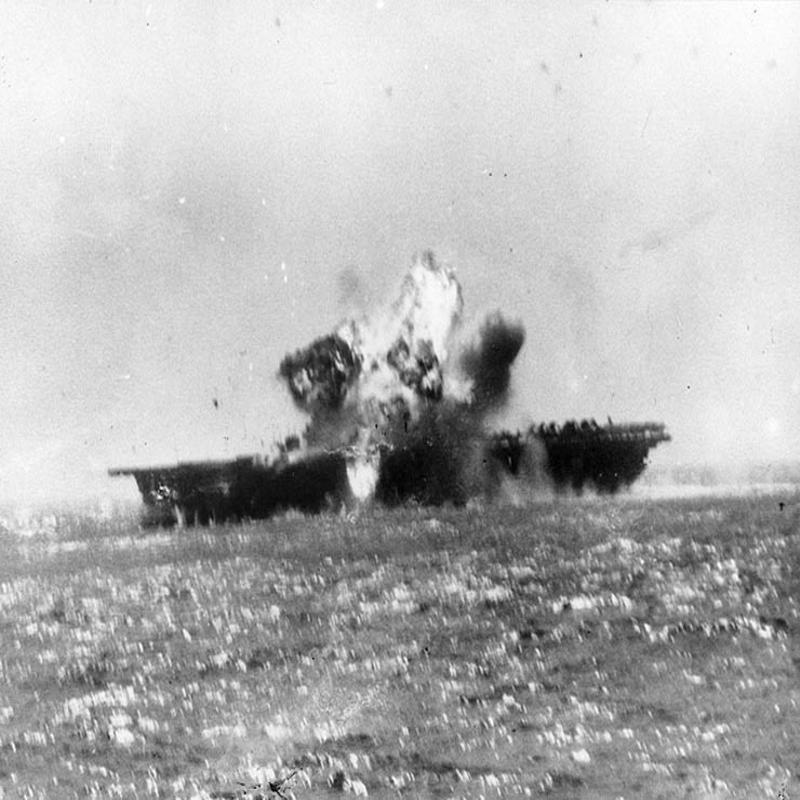
It was a day that would live long in the memory of those who had been present and American sailors were later to write of their astonishment at what they had seen – Japanese pilots deliberately crashing their planes onto Allied warships to sink them, making themselves the bearers not only of their enemy’s destruction but their own.
They should not perhaps have been so surprised for events at Saipan just a few months earlier should have taught them otherwise. Here horrified Marines were forced to watch as mother’s holding their children by the hand or clasping a baby to their breast threw themselves to their deaths from the cliffs rather than surrender themselves or live under American occupation. Indeed, the campaign itself had concluded with the largest Banzai attack of the entire war as the remaining 4,300 Japanese troops some swathed in bandages and clearly wounded or on crutches hurled themselves at the American lines and were killed almost to a man.
It was an indication of the fanaticism that would come to encapsulate Japanese resistance in that final year of the war.
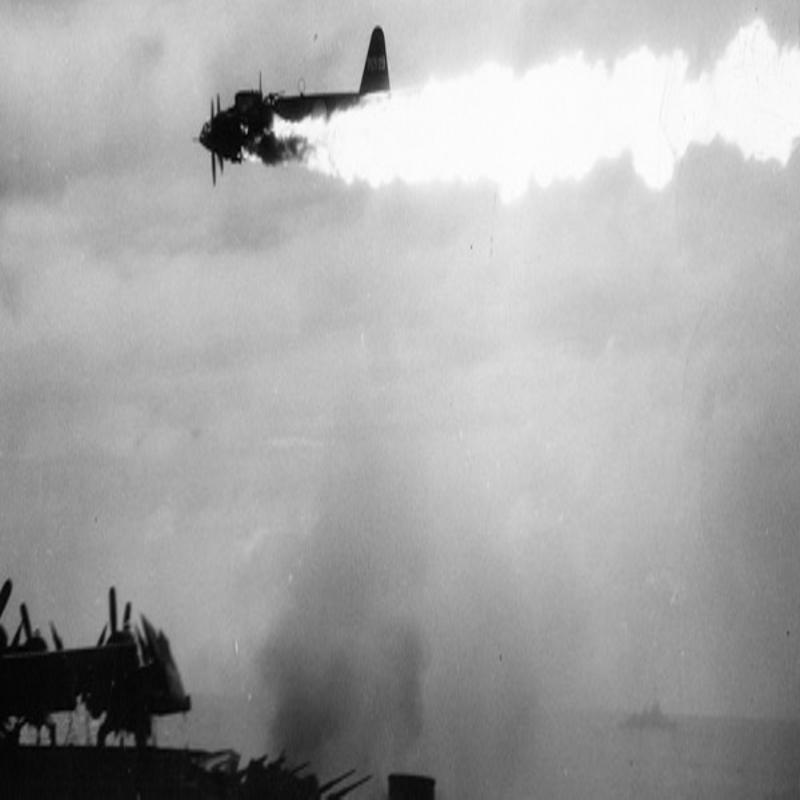
But such self-sacrifice did not imbue the American and Allied servicemen who faced it with any admiration for the courage of their enemy. It merely served to reinforce preconceived notions that the Japanese cared little for human life whether it be their own or even their children’s.
The ill-treatment of Allied prisoners-of-war and peoples under Japanese occupation were well-documented and now their apparent willingness to sacrifice that which is most precious for their Emperor, their God on Earth, was not considered noble but a reason for scorn and contempt.
Suicide attacks were certainly not unknown, unable to penetrate the formidable defences of the B29 Super-fortresses some Japanese pilots had taken to deliberately ramming the Bombers to bring them down and there had been similar attacks on warships before, but these had all put down to the pilot having already been killed or was so badly wounded that he had lost control of the plane. Such assumptions had now been dispelled – the Allies had been taken by surprise at Leyte Gulf, they would not be so again.
Kamikaze attacks were to continue and would reach their zenith at the Battle of Okinawa between March and June 1945.
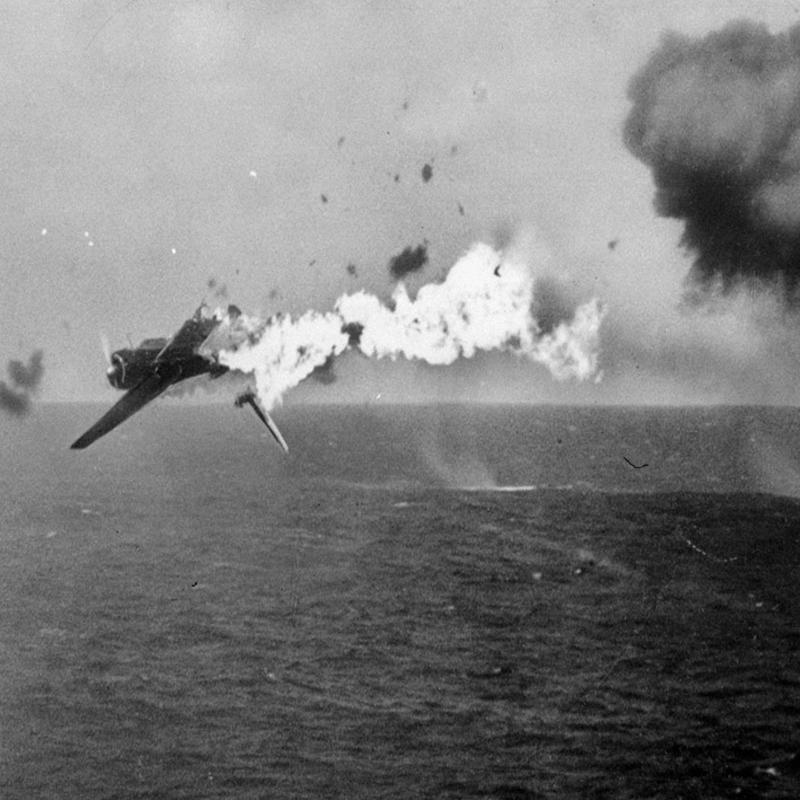
On 6 April, the Japanese launched Operation Kikusui, or Floating Chrysanthemum but with American Fighters now constantly operational to protect the fleet and the air so thick with anti-aircraft fire trained on incoming Kamikaze that the sky darkened as if night was descending only 24 of the 193 planes in the first wave reached their targets and even these were restricted to attacking the smaller vessels forming the picket ring that protected the Carriers and larger warships.
During the Battle of Okinawa 1,900 Kamikaze sorties were flown from Airfields on Kyusu and Formosa but despite the ferocity of the attacks, and the fact that the Escort Carrier USS Bunker Hill was severely damaged, and 389 men killed most of the Kamikazes victims were support and supply vessels and only 2 destroyers and a few smaller craft were actually lost.
Had the American Aircraft Carriers had armoured flight decks like their British counterparts then the likelihood is the Kamikaze would have been even less effective than they were. For example, there were 8 hits on British Carriers resulting in only 20 recorded fatalities and no ship was out of action for more than a few hours.
Between October 1944 and August 1945, there were 3,913 Kamikaze attacks but barely 15% ever hit their targets and they sank only 34 ships most of which were of a type that were easily replaced with a further 368 badly damaged but rarely put out of action. Casualties were high however, with 4,900 servicemen killed and 4,800 severely wounded.
It had been a frightening and deadly experience for those who had to endure it but self-immolation as a tactic had failed. As a means to secure victory it was as assuredly doomed to defeat as its participants were to death.
For all the heroism, some would say madness of the Kamikaze they could neither halt nor even slow down the Allied advance and did nothing to change the course of the war in the Pacific only the manner of its conclusion, perhaps; for faced with the prospect of sacrificing the lives of his own young men and those of his allies on the altar of the enemy’s insanity, President Truman ordered the dropping of the Atomic Bomb on Hiroshima and Nagasaki.
Share this post:





